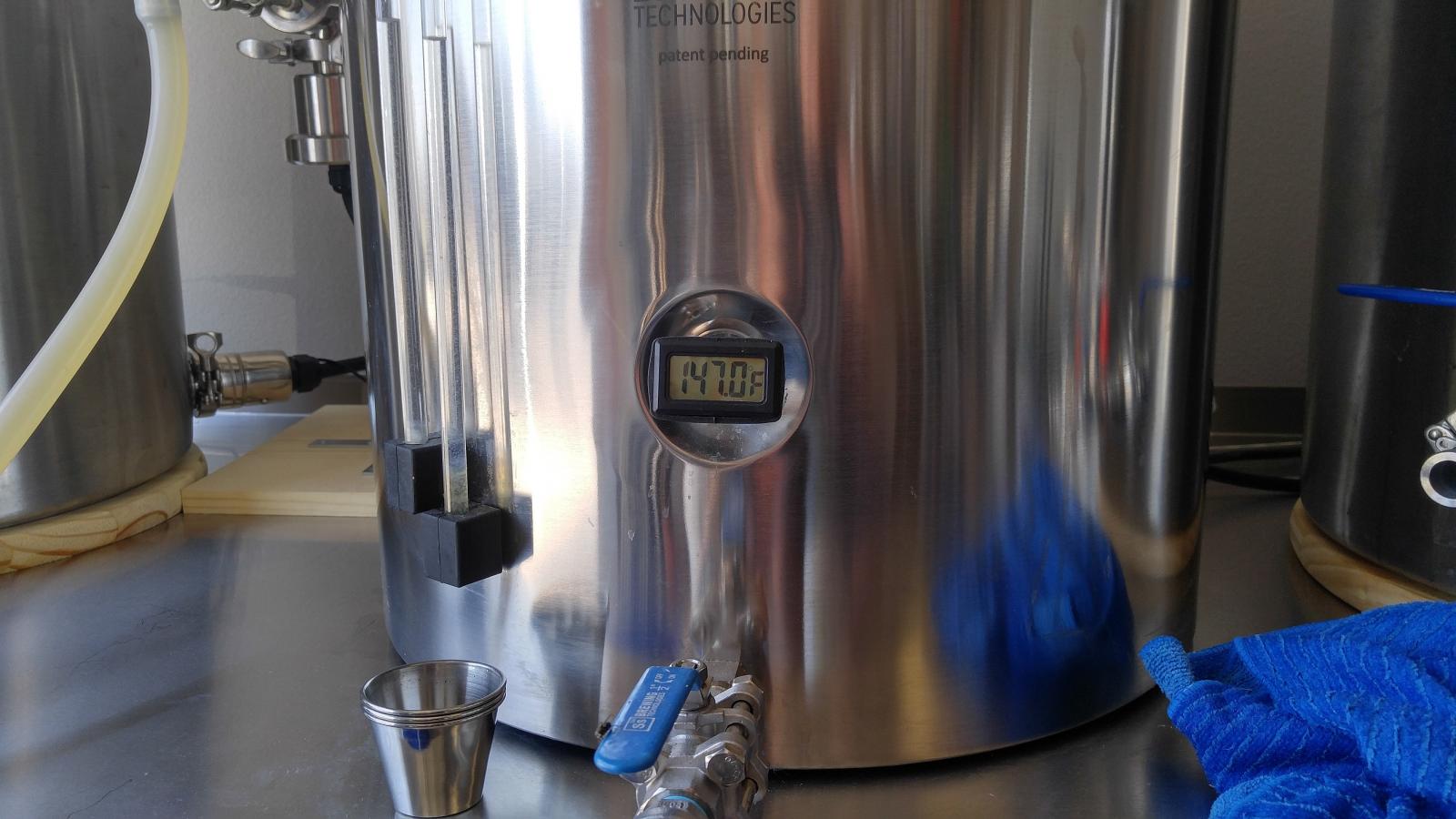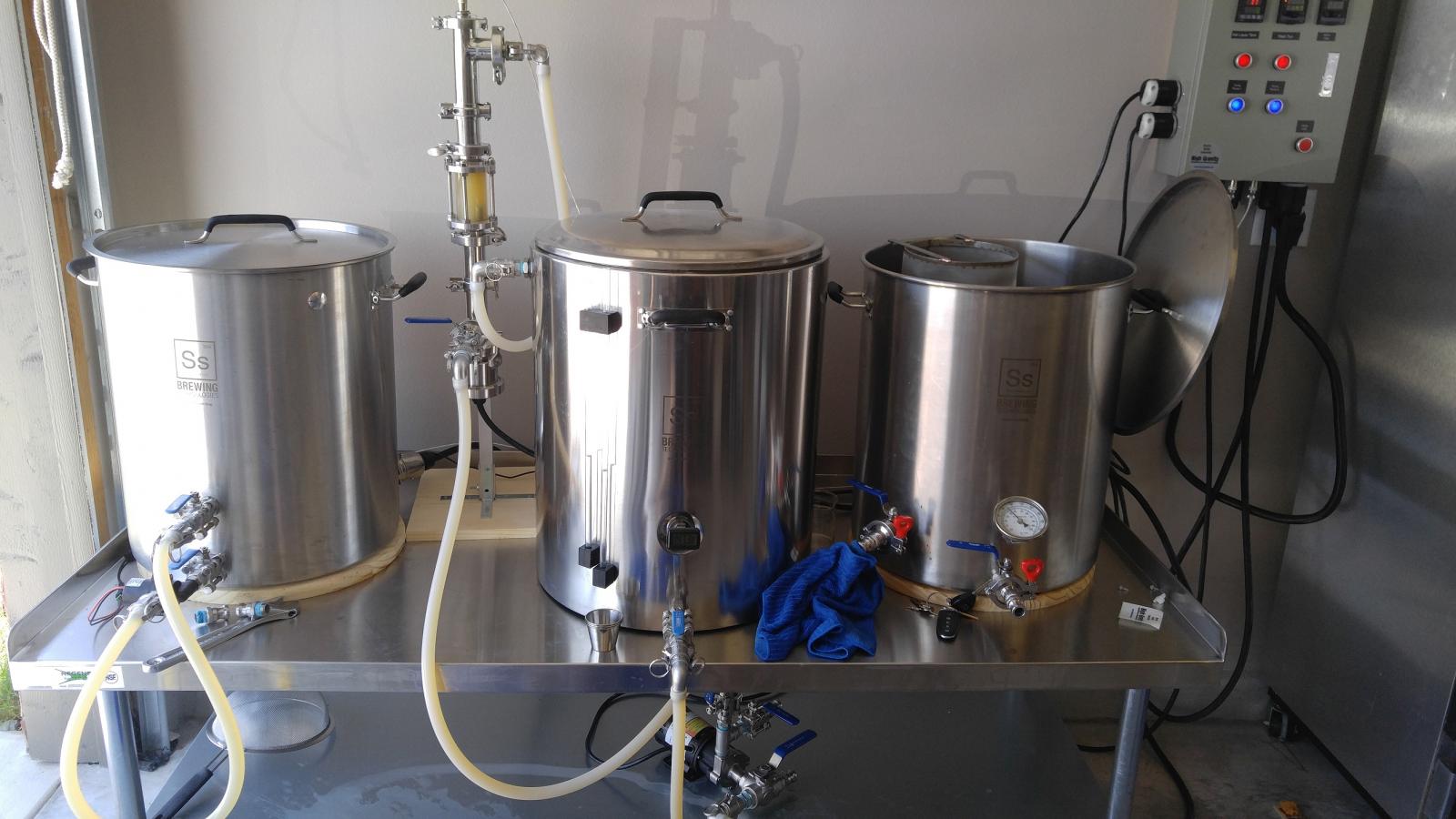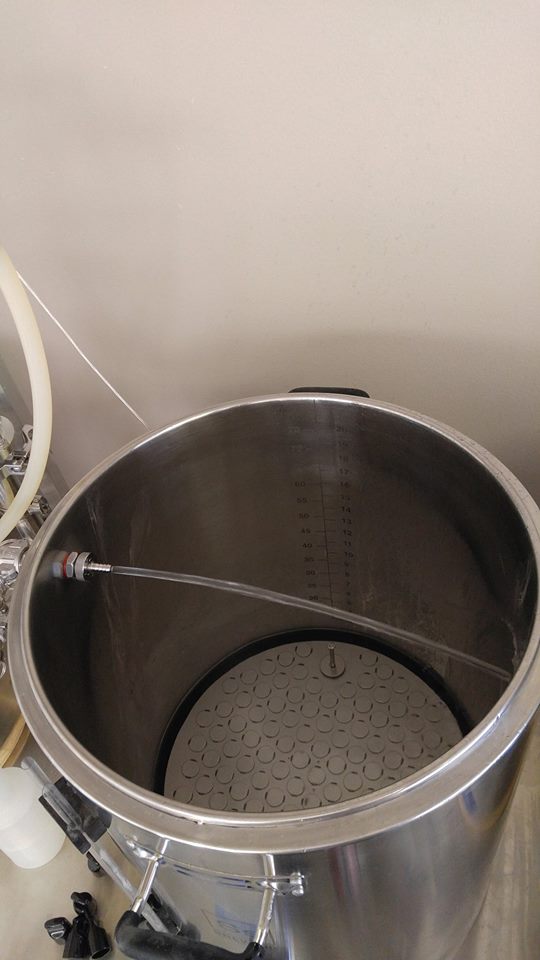dthompson79
Well-Known Member
- Joined
- Jan 21, 2016
- Messages
- 147
- Reaction score
- 46
I think it would work just fine small volume or not if you used their MTS heater. Though I cannot speak to this with certainty because I do not own a MTS

I tend not to use the Temp Control unit during the mash itself because of how unpredictable it is. But on one brew day at 23 minutes into a 90 minute mash, I plugged in the heater. It was 146.3F at 23 minutes (target 149F). At 60 minutes it was 145.7F. At 90 minutes it was 146.6F. So it dropped and then only rose a total of 0.3F over 67 minutes. On the brew day above when I had the heater on for over 3 hours to try and raise my strike water, I left it on through my mash. I lowered the target to 154F. 10 minutes into the mash, it was 150.6. At 60 minutes, it was 156.5. So it finally worked but it overshot by 2.5F.
In sum, I no longer have consistency and repeatability for my mashes. Id like to switch out the thermometer to a more reliable analog thermometer but this requires ⅜ NPT, which even Ss doesnt carry. The only ones Ive found so far are expensive and with lots of S&H. My LHBS couldnt find any in that size through their supplier.
There are lots of other miscellaneous issues. For example, the gasket around the false bottom started fraying after just a few uses. I cut off that fray but now its started fraying again in a few spots. The rubber feet pop off easily (lost one in the yard for a while). You can feel a weak spot in the design where its warm at the indentation around the thermowell (seems like that could have been avoided but Im no engineer). After just 6 months, one of the LCD bars on the Temp Controller is out. And, at the end of running off when it starts sputtering, it often begins to pull through grain into the BK. I didnt have this problem with my cooler MLT and I wonder if its the 5 degree sloped bottom design, which is meant to catch small grain that makes it through the false bottom. When its sputtering at the end, Im guessing it creates enough force to pull many of those bits off. If anyone has thoughts on how to prevent this (other than trying to turn off the ball valve as quickly as possible), please let me know since I dont like lots of grain bits in my BK.
dthompson79, please keep us posted on whether the Blichmann false bottom fixes it.
When I've cleaned the MLT in place by scooping out the grain, I've noticed that after I lift out the false bottom, you'll see small bits of grain on the sloped bottom, which I'm pretty sure their materials say it's designed to do. When you add water to clean and drain it, you can watch how some stuff will hang around until it's nearly empty and then the last thin layer of water sloshing around can jar them loose, which I think is the problem. So even longer recircs at the beginning as Ianflean noted may not solve that since I think it'll just help with the grain bed and not what's below on the slope. If the Blichmann let's even a little bit through initially before the bed settles, then that may not solve it. I guess a brew bag may solve it, but part of the reason I bought this was to reduce the amount of synthetic materials on the hot side. I think the key is to either prevent the small bits from getting through the false bottom and onto the slope (maybe Brew Bag or Blichmann) or to find a way to jar them loose during the vorlauf so the slope is cleared before run off. Perhaps speeding up the vorlauf would help, but then you could risk a stuck sparge. Hmmm....
I find this thread to be depressing. I've been using the same Igloo cooler for 20+ years and I loved the idea of replacing it with stainless. But this thread is convincing me to not buy one. Sigh!

You can tell that thing was a labor of love. You made it look fantastic. Great job!!!
I find this thread to be depressing. I've been using the same Igloo cooler for 20+ years and I loved the idea of replacing it with stainless. But this thread is convincing me to not buy one. Sigh!
Great to hear someone is seeing the grain issue resolved with a different false bottom. Now I'll just have to decide whether to put more money into this.
Spartan1979, you might also want to look into the Chapman stainless MLT. I was heavily thinking about that one but went with the Ss because of the heating option (which I don't recommend) and because there was a forum where people were going back and forth on whether it was bad the Chapman uses 201 stainless instead of 304. I don't know enough about that so I decided not to risk it. But I asked John Palmer about this at the Brewing Network party at NHC in Baltimore this year and, while he wasn't familiar with the product, he talked about the differences between 201 vs. 304 (similar stuff to what I've seen posted), and then concluded that it was no big deal and it should be just fine. I was also attracted to the digital thermometer on the Ss but of course I now regret that too. If I could do it all over again I'd still get a stainless mash tun but I'd get the Chapman. Of course, I haven't used it and can't vouch for it but it'd be cheaper, it'd have an analog thermometer, and it should have the grain issue since it doesn't use a slope bottom. So in theory it'd remedy all my concerns. And I like how the lid clamps down.
Great to hear someone is seeing the grain issue resolved with a different false bottom. Now I'll just have to decide whether to put more money into this.
Spartan1979, you might also want to look into the Chapman stainless MLT. I was heavily thinking about that one but went with the Ss because of the heating option (which I don't recommend) and because there was a forum where people were going back and forth on whether it was bad the Chapman uses 201 stainless instead of 304. I don't know enough about that so I decided not to risk it. But I asked John Palmer about this at the Brewing Network party at NHC in Baltimore this year and, while he wasn't familiar with the product, he talked about the differences between 201 vs. 304 (similar stuff to what I've seen posted), and then concluded that it was no big deal and it should be just fine. I was also attracted to the digital thermometer on the Ss but of course I now regret that too. If I could do it all over again I'd still get a stainless mash tun but I'd get the Chapman. Of course, I haven't used it and can't vouch for it but it'd be cheaper, it'd have an analog thermometer, and it should have the grain issue since it doesn't use a slope bottom. So in theory it'd remedy all my concerns. And I like how the lid clamps down.
Been following this thread with interest, as I just purchased one of these but am not ready to brew with it yet.Reporting back on the 20 G blichmann false bottom. 2 batches in and it works Great!!!! other than the initial little bit during recirculation. I haven't seen one piece of grain make it through. And my mash efficiency jumped 10% (though this may be more of a symptom of switching to RIMS)



Question: Why would you spend all the extra money on an insulated tun when you are using a RIMS? I haven't understood this and have seen it a couple places. The only function use for the insulated tun would be a single infusion non recirculated mash, no?
I love the addition of the site glass mid rims tube like that!
What did you do to block the opening in the Blichmann false bottom for their dip tube?
Do you have a picture of your Tun with the Blichmann false bottom installed? Would love to see it. I seem to be getting a lot of grain coming through the stock bottom.
How difficult is it to clean these things? The 20 gallon is supposed to weigh 60lbs empty(!), so I wouldn't want to have to pick it up and move it to get it clean. Once you've scooped out the majority of the grain and removed the FB, are the remaining bits of grain easily washed out without moving/tilting or anything like that?





Here is the false bottom in place, and a few brew day shots just because

Really nice, thanks for sharing. Did the original SS BrewTech silicone ring fit the Blichmann false bottom or did you get a different one? I always struggle wrestling that thing on!
Enter your email address to join: